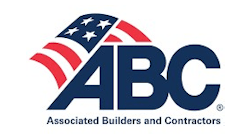Long words with more than three syllables disturb some people. Even though it has been around for some years in common conversations, technology is one of those words. For some people, as soon as you mention the word, they become defensive and close their ears and minds. One reason is that the listeners fear the technology considered will be something about which they know nothing yet. Another reason is that there are always those other people who go on and on and on and on about how wonderful the technology is and how expert they are at its use. It reminds me of words that get used too often by the news media, talk shows, and politicians, words of optimism, encouragement, or good sense that are so abused that their true meaning is lost. Experts in the details of a technology can confuse us with the quantity of words, phrases, or just initials that they strew in their conversations. That’s a shame, because we have all been using one useful technology or another for years.
For this article, I have been thinking of the dirtier aspects of earthmoving. I have been thinking of the actual equipment being used at the job site and the training of the people who run that equipment. Experience matters a lot in such work—good experience, that is. Know where to find all the safety and control features on the machine and don’t pretend to understand something that you don’t. With advances in engineering come new operating techniques. Manufacturers have studied the best methods for using their machines, and they make their recommendations readily available. For example, hydrostatic drive systems are popular, and they are more responsive than anything we’ve known before. Machines will move immediately when you activate the controls. Operators with long experience on other controls may have to adjust hand and finger movements that have become almost automatic and, because of the new controls’ sensitivity, movements like pulling back quickly can be harmful to you and the machine.
Recently, Grading & Excavation Contractor presented an article on simulators. It isn’t the technologies that make the simulators work that is important to contractors; it is the value of the simulations produced. How often have you said that you don’t really understand television or computers, you just use them? You don’t have to understand how television gives us a picture from the other side of the world; you evaluate the picture’s usefulness or interest. It’s the same with earthmoving equipment. You don’t have to understand the finest engineering details of the design, the rules of metallurgy involved, or the intimate efficiencies of a particular engine design, but you should know how much a machine can do for you, what it can do for its operator, how much money it can make for you each hour it is operated. If we don’t use our machines to do what they are designed to do, we are throwing away good money (today, lots of it) spent on their purchase or rental. That’s what training addresses. Training helps you understand what you are operating. Its value is immeasurable. Knowing the capabilities of your equipment can help you to submit winning bids. Once you have the job, knowing and using the capabilities of your earthmoving machines can help you get the job done more quickly, more efficiently, and more profitably. Well-trained employees are as helpful as any cost-cutting scheme you can find.
All training and technologies need not imply extensive new vocabularies for owners and employees. That in itself would scare away many workers and their bosses. The experts in the technologies themselves have dozens of buzzwords, initials, even invented words and phrases, to convince us that they are the experts and we the mere pupils. Some years ago I was asked to prepare an operations manual for the military, for a new gun. The vocabulary of the booklet was supposed to be for soldiers with a fourth-grade reading level. One of the words, at five syllables difficult to say let alone read, describing a small component, was almost as long as the barrel of a World War One Krupp howitzer, and I said it was too long for the readers with the expected low reading level. “Let’s call it the red button and describe in simple, short words what it does,” I suggested. That’s all the soldier needed to know. No, we couldn’t do that because that would not sound clever or military enough. Those are not the practical intentions or results of training technologies. The practical results are operators who produce more, who earn more (for their bosses and themselves), jobs that prove valuable, employees who want to stay with you.
The Beginnings of Training
Our first training in life was when we were very small children. It probably involved standing, walking, toilet training, and—perhaps most of all—talking. All training involves understanding, and that usually involves talking, reading, communications, questions, and answers. Here is our first technology for earthmoving employees. Do they understand what is being said to them? Can they read the language of the training exercises if they are written? Are they confident enough to ask questions? The language of training is a technology, one that must be understood by the learners to be of any practical use. A healthy percentage of today’s construction workers do not have English as their first language. That does not mean they are unintelligent. Some of them are our best workers, so we want to keep them. Do they understand training programs (from books, tapes, or simulators) that you present to them? Some manufacturers have manuals in Spanish and other languages. Could that be a useful training technology for you? Manufacturers like Caterpillar, Doosan, Volvo, John Deere, Kubota, JCB, Komatsu, Case, New Holland, Hitachi, Terex, and Bobcat are well aware of the global problems of languages. They can be good advisers for you.
We tend to assume that all students who have attended our elementary and high schools can speak and understand English. That is, unfortunately, not true. I have met several people who claimed superiority in that they were born here, went to school here, and have American-sounding names (whatever they are!), but they proved incapable of efficient reading and communicating. For the training of earthmoving operators and other construction workers, it is imperative, then, that you know they understand their training and instructions. Before you allow anybody to work your expensive equipment, you must know that he or she knows what to do and what not to do. Not only will correctly trained workers give you profitable operations, they will also give you safe operations. Note here that we assume the trainers know what they are doing and what they are teaching. Efficient trainers are as important as dedicated students. A valid criticism of a few “highly technological” programs for managers and other workers in the construction industry is that the people who devised the programs clearly know nothing about the everyday work their potential customers do.
There are colleges, institutes, and other organizations that offer excellent training for your workers. For that, your workers must have access to and understand computers, because sometimes the learning takes place in two places, at a job site and at a distance. You can learn basics at home, for example, then spend some time on the real equipment at a specially prepared training ground. One reason your workers don’t understand manuals or instructions is that they have never had education in doing so, so you cannot assume that somebody who can play football, baseball, or basketball on a video game or computer is computer literate to the extent that he or she can follow written or spoken instructions for equipment and job training on a computer…just as a football, baseball, or basketball expert at a video game may not be so expert in a real-life situation.
Sensible training involves testing, too. Frequent checking or testing to see what has been learned and what needs revision is most helpful. This is where computer-based programs can offer so much, because their speed and accuracy in calculation are unbeatable. None of us is faster or more accurate than a computer. Yes, you may well be able to work out the costs and come up with an excellent bid on that trenching or paving project at The Foothills Restaurant and Lounge just by using a ballpoint on a paper napkin at Cindy’s Place, but a computerized program will do better than you, especially on anything bigger, on anything that could bring significantly better business for you. And don’t forget local regulations! Repeat: Don’t forget local regulations.
A most important facet of good training is making your workers aware of laws and regulations that apply to their work. Such training may or may not include “technological” help. For some projects an adequate knowledge of OSHA recommendations and regulations is vital (or you may not get the job). You can find programs that give you different, advanced OSHA certifications but there are some procedures that everybody onsite should know, especially if the site in question presents such difficulties as confined spaces or restricted access. OSHA rules are not just the government barging in; they are sensible, for the benefit of everybody, including you. Knowing how to prevent accidents, knowing what to do if an accident happens, understanding rules for protective wear (not only hardhats), being able to spot potential electrical hazards: All of these are skills that every worker on site should know. Excavation has its own dangers. You know what they are from your experience. Training tells your workers what they are. As a good reason for good training, nothing beats safety—the safety of your workers, your equipment, and everything and everybody at the job site.
Traditional Training Is not UselessThe most common objection to using any kind of “technology” for training is that “We’ve always managed very well without that stuff.” There are years of truth in that and almost as many misunderstandings. Having an experienced dozer operator explain some techniques to the new employee is a good idea, but remember that the experienced operator may not be familiar with the advances on a new dozer, just as some people think there’s been no popular music since the Beatles or Elvis. Both experienced and new operators should familiarize themselves with new equipment before being allowed to run it. The old saying that “Our Gary can run anything with an engine!” is not true any longer. Gary may get your dozer to go forwards and backwards noisily and cheerfully, but is he using the full potential of the machine? Who knows the full potential? So often we neglect the carefully prepared manuals from the manufacturer as if they were something done just to irritate us. The manufacturers of today’s earthmoving machines know the technologies their equipment can use, and they can teach you how to get the best results. If that is technology, hurray for technology!
Manufacturers may be your best source for training materials. Several makers of earthmoving equipment have introduced simulators into their instruction packages. They are certainly worth investigating. Are they too technical? Too technological? Of course not. The design of the simulators and their programs may be beyond our brains, but the programs are excellent, offering different levels of achievement for each machine. So Gary (the one who can operate anything) can benefit from one of the advanced programs because he does already know the basic stuff. The programs offered by manufacturers are far better than you or I can devise, and they will be less expensive than anything you or I can devise.
The objection that all these new technologies are money down the drain is rarely true. When you consider the real cost of having your best operator do the training of new employees, instead of producing as usual with this machine, or the real cost of you trying to teach everybody everything, you will soon realize that somebody else’s training program or technology is, in fact, less expensive.
Anybody who is new to earthmoving work will benefit from advice from those who have done it all before, as long as they have done it well. How do you know if your crews are good compared with others? It could be a non-technological but most worthwhile part of your training (or retraining) to visit the sites of other contractors. Look at their equipment. Look at their crews. Look at how they manage the work. It may be very much like the way you do things; it may be better, or worse. Such visits will surely give you ideas about aspects of your business that could be improved. Take a most simple aspect. What do your employees look like? How do they move around the site when they’re not in machines? The person who is considering your company for his next earthmoving project may be out there comparing companies. How would yours impress him? Is there an air of success and being busy? Are there groups of workers standing idly because their tasks have been poorly scheduled? Is the equipment in good condition? Does it look as if it were ready for the next job? This may apply especially to smaller contracting companies in these challenging economic times. Whether you get the next project or not may depend very much on how your company appears to potential users. That does not mean you have to have all new machines and vehicles, but it does mean that what you have runs well, is obviously well-tended by its operators, and works at a steady pace. All those views of a project will tell if your training had been effective. Whether you have used advanced technologies or more traditional methods, the goal is the same. Training makes your company work well—and profitably.
The Arithmetic of Training Technologies
Your use of the latest technology may depend on which aspect of your operations you are trying to improve. There are several excellent technologies and programs available for training your financial people to make profitable bids, for streamlining the daily monitoring of your business (both in the field and in the office), and for staying touch with all the necessary legal and governmental regulations. Those programs are most useful, and I would mention a few names like Meridian, Trimble, HCSS, Carlson, Topcon, Dexter + Cheney, e-Builder, Autodesk, PlanSwift, and Sage to get you started on investigating Web sites and other sources of instant information.
The real arithmetic of training is that it saves you time and money, even if it costs you something to do it in the first place. Contractors dislike some “R” words. Rain can hinder progress, rebar has been known to jolt a few careless diggers, repairs threaten ruin, but the most dreaded R of all is rework. Anything you can plan to ensure that the first pass, or the first cut, or the first grading is correct will probably save you time and money. A well-trained operator does not have to rework his passes.
This magazine has highlighted several products available for machine guidance; those instruments, in the hands of trained employees, are tools to help you avoid rework. Find out why a past job had to be reworked and then plan to avoid the same mistake on this job. Was it the operator? Was it the machine? Was it carelessness? They are the concerns that training and technologies address.
One of our problems concerning training may be complacency. Many excavation contractors have been working for so long without a mishap and as profitably, as they imagined they could do everything, that they have developed a sense that either they must be doing it right or that the work really isn’t as dangerous or challenging as it seems. These are both common and dangerous misconceptions. What if your projects could have been 10% more profitable in the last three years? Would that have made a difference? A fear of new technologies is a form of ignorance, an attitude we may have that reassures us we are doing everything right and nothing can help us improve. In training, as in accounting and bid preparations, technologies can help us be more competent, more impressive, more prepared to win the contracts we need to survive and prosper. Don’t be afraid of the long words like technology. Don’t push them aside because they are obviously not for practical people like you. A technology to help you train employees is as useful as a technology to give your dozer better fuel efficiency.








